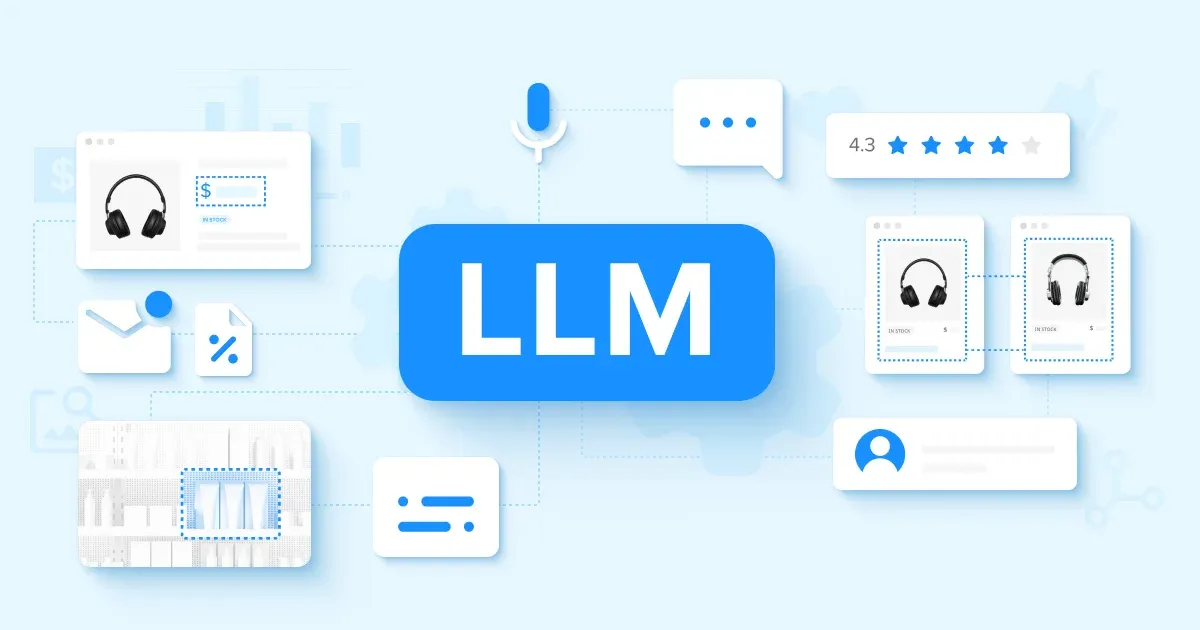You've probably come across the term LLM—short for Large Language Model—in conversations around artificial intelligence.
These powerful tools are driving many of the most exciting advances in tech today, from intelligent chatbots to sophisticated content generation.
But what exactly are LLMs, and why are they such a big deal?
Understanding Large Language Models
At their core, Large Language Models are AI systems trained to understand and generate human-like language. Built using deep learning techniques—particularly neural networks—they analyze massive amounts of text data to learn how words, phrases, and sentences relate to one another.
Think of it like this: an LLM doesn’t memorize answers—it learns patterns. Once trained, it can predict the next word in a sentence, summarize documents, answer questions, write stories, translate languages, and even write code.
Popular LLMs include OpenAI’s GPT models, Google’s PaLM, Meta’s LLaMA, and many more. These models are the brains behind tools like ChatGPT, Bard, and Copilot.
What sets LLMs apart is their ability to generalize. They're not programmed with a fixed set of rules—instead, they use what they’ve learned from vast datasets to generate responses to new and varied inputs in real time.
Why They Matter
The impact of LLMs is already profound—and we're just getting started. Here's why they’re making headlines and reshaping industries:
-
Efficiency: LLMs can automate time-consuming tasks like summarizing reports, generating emails, or translating documents, saving hours of manual effort.
-
Accessibility: By powering voice assistants and smart interfaces, LLMs make technology more intuitive and user-friendly for everyone.
-
Creativity: From writing scripts to composing music or generating art prompts, LLMs are fueling a new wave of human–AI collaboration.
-
Innovation: Businesses are using LLMs to build smarter chatbots, improve customer support, analyze data, and develop new digital products.
They're not just enhancing productivity—they’re enabling entirely new ways to work, create, and interact.
How Industries Are Putting LLMs to Work
LLMs aren’t just for tech companies—they’re proving valuable across a wide spectrum of industries. Here's how:
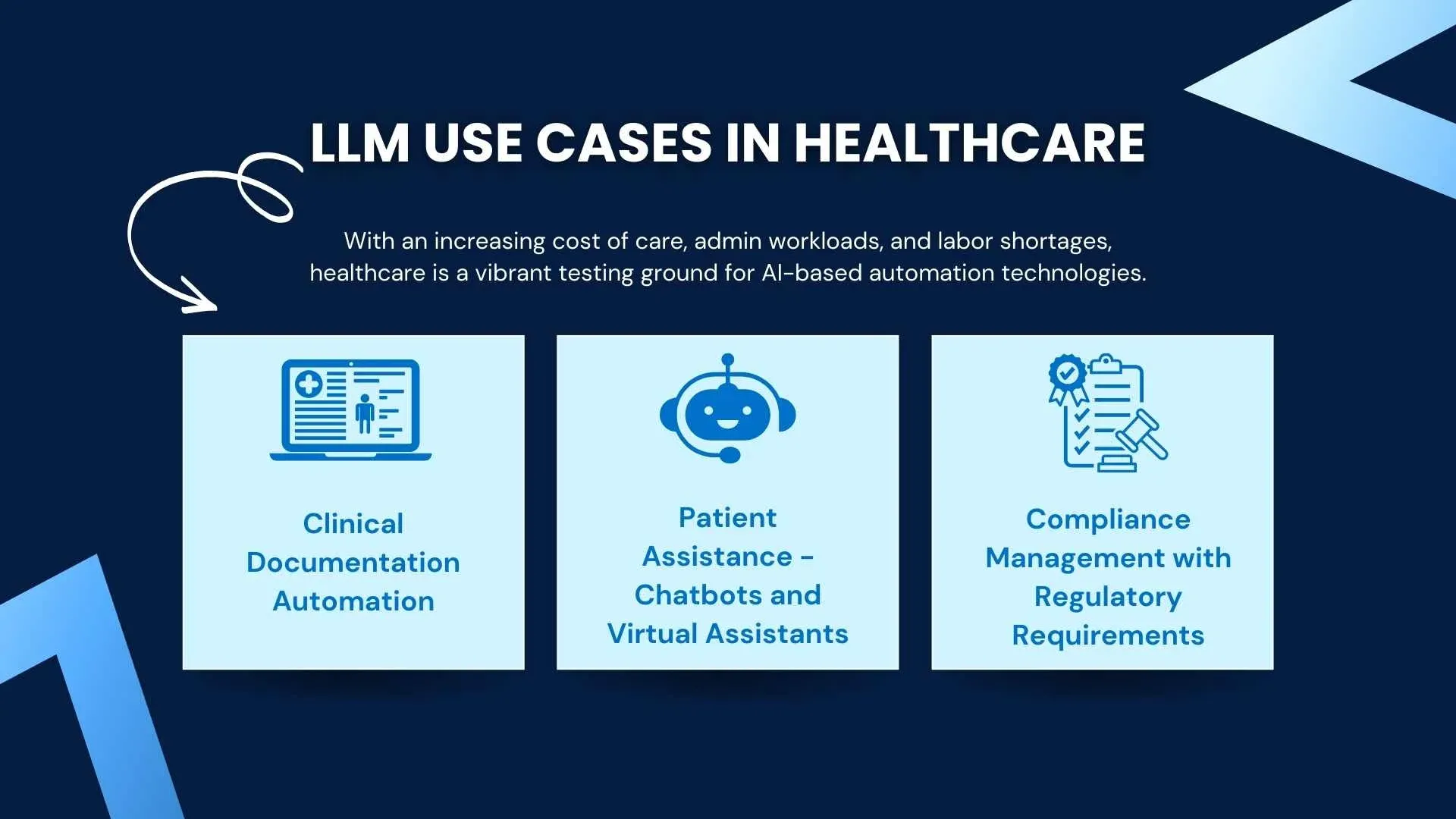
1. Healthcare:
LLMs can help summarize patient records, assist in diagnosing symptoms based on documentation, and power AI chat assistants that answer common health inquiries—improving care efficiency and access.
Clinical Documentation Automation
LLMs help automate clinical documentation by converting spoken or typed input from healthcare providers into structured medical reports. This reduces the administrative burden, improves accuracy, and ensures more complete and accessible patient records—ultimately enhancing care team communication.
Patient Support with Chatbots & Virtual Assistants
LLM-powered chatbots and virtual assistants provide patients with 24/7 support, answering questions about symptoms, medications, and treatments. These tools offer a smoother healthcare experience by helping patients schedule appointments and access educational resources in natural, conversational language.
Real-World Example: Babylon Health
UK-based Babylon Health uses LLMs to power “Olivia,” a virtual assistant that books appointments, answers patient questions, and provides basic medical advice. This reduces staff workload and makes healthcare more accessible for patients.
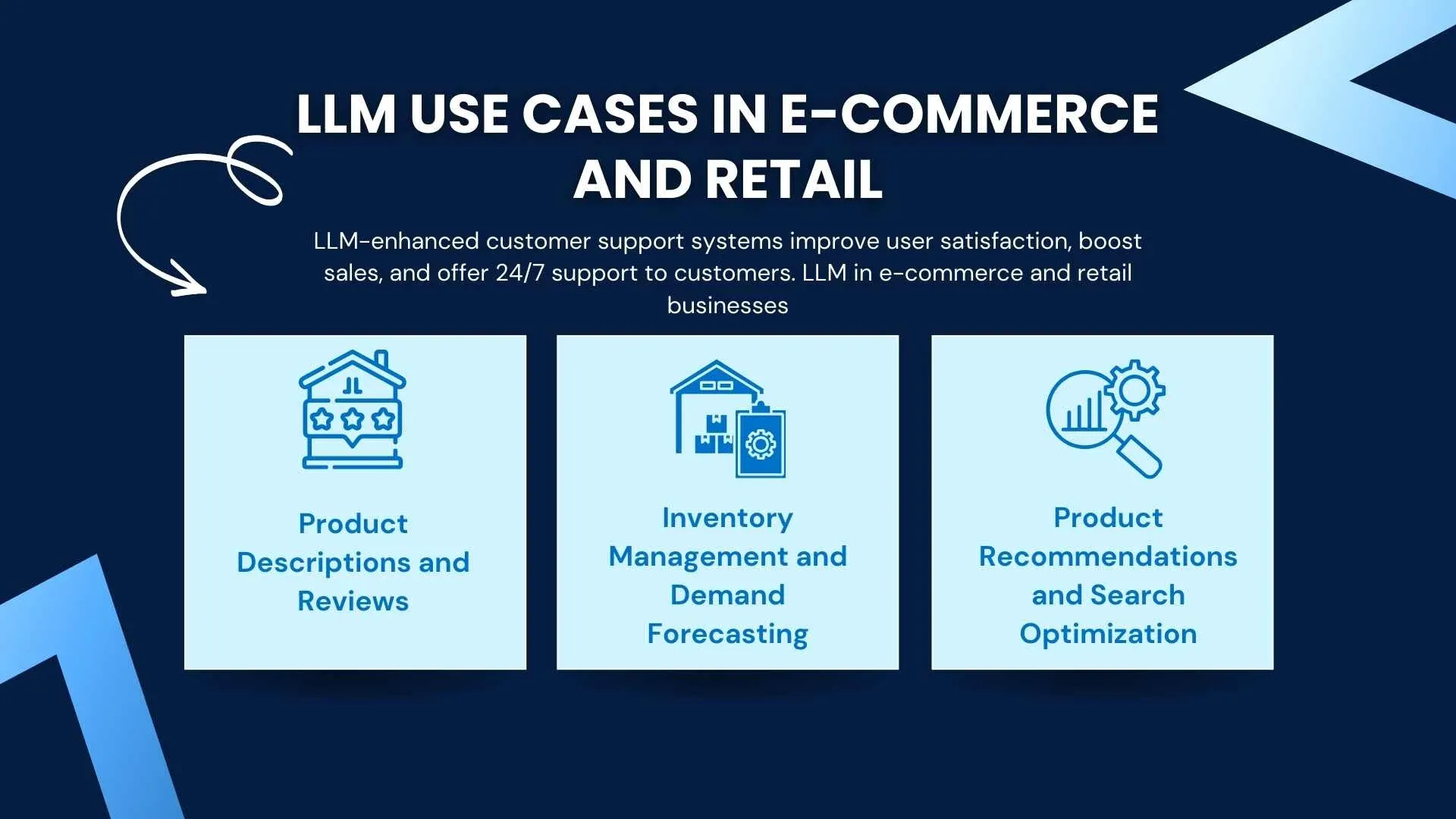
2. Retail & E-commerce:
Retailers use LLMs for personalized customer support, product recommendations, automated reviews analysis, and content creation for listings—enhancing both CX and sales.
Product Descriptions & Review Analysis
In retail and eCommerce, LLMs generate clear, compelling product descriptions—key for influencing buying decisions, with 76% of shoppers reading them before purchasing. They also perform sentiment analysis on customer reviews, offering insights into preferences, pain points, and satisfaction.
Inventory Management & Demand Forecasting
LLMs process supplier communications, sales trends, and inventory data to predict demand and streamline stock levels. This helps businesses avoid overstocking or stockouts, cut costs, and maintain a more efficient supply chain.
Real-World Example: Amazon
Amazon uses LLMs through its Personalize service to tailor product suggestions, marketing content, and web experiences. They’re also exploring LLMs for writing product descriptions and enhancing customer support via AI-driven chatbots.
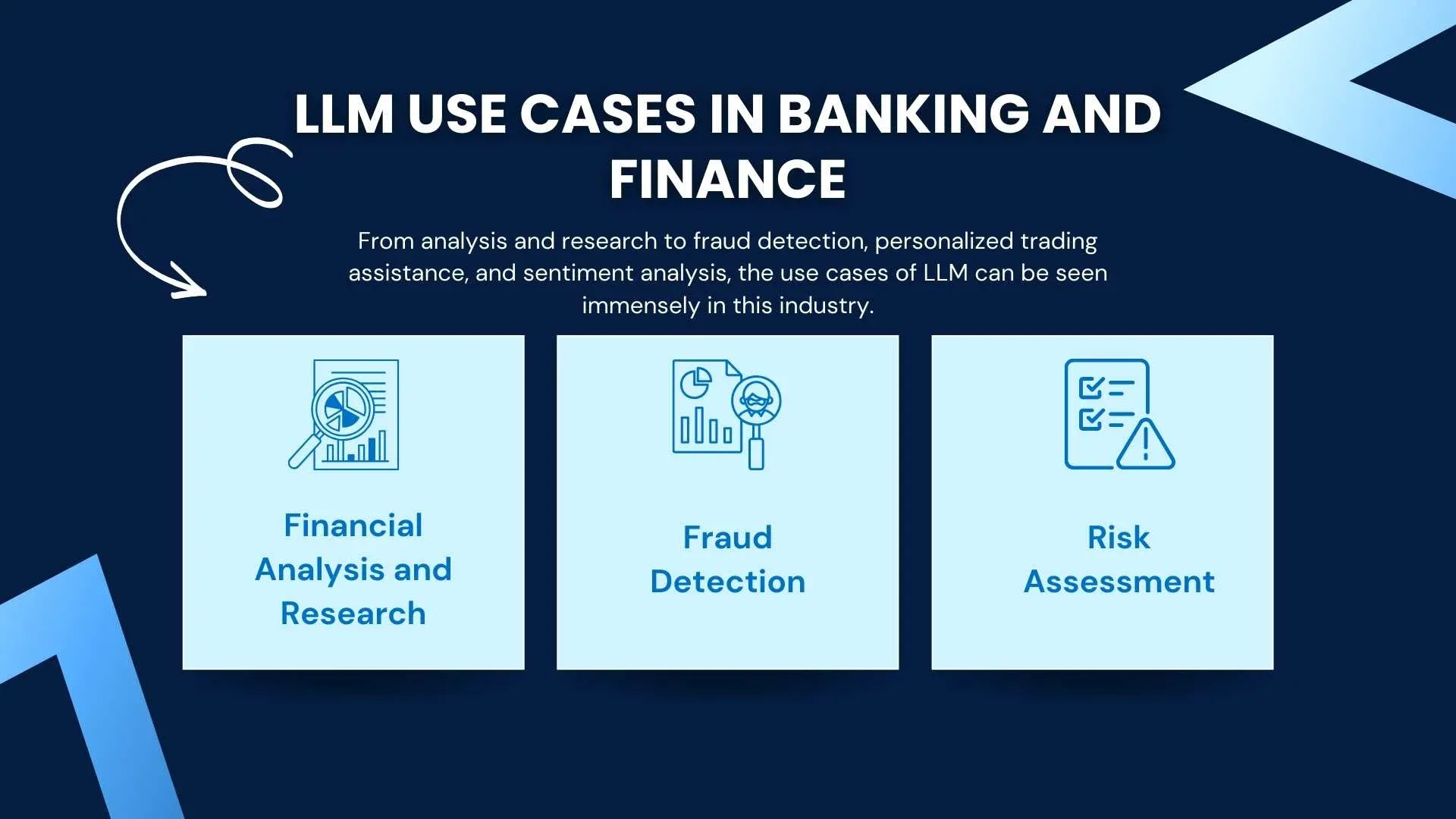
3. Finance & Insurance:
From fraud detection to processing claims and analyzing customer inquiries, LLMs can streamline internal processes and improve compliance through intelligent document handling.
Fraud Detection
Nearly 1 in 5 people report financial losses from imposter scams, according to the FTC. LLMs help detect suspicious language and behavior patterns, stopping fraud before it happens and making transactions more secure.
Risk Assessment
LLMs scan and summarize risk data from multiple sources. This helps financial institutions stay updated on potential threats, regulatory shifts, and compliance issues—faster and with less effort.
Real-World Example: JPMorgan Chase
JPMorgan uses LLMs to detect fraud, track market trends, and personalize financial advice. This allows the bank to serve clients better and make smarter investment decisions.
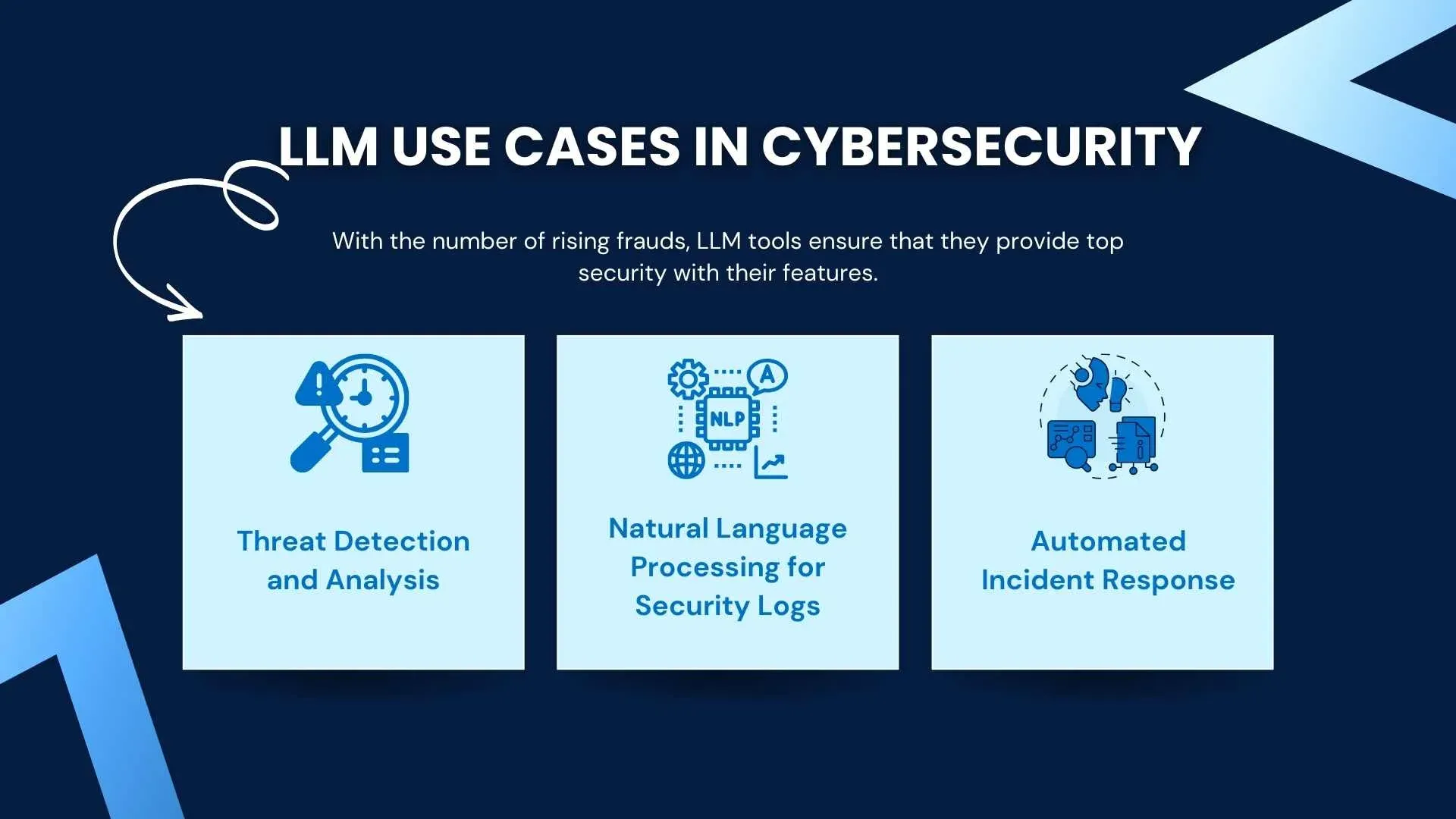
4. Cybersecurity:
Companies are leveraging LLMs to enhance threat detection, automate incident response, analyze logs in real time, and power intelligent security assistants that support faster, more accurate decision-making.
Threat Detection
LLMs can analyze logs, emails, and network activity to detect unusual patterns or suspicious behavior—helping identify threats before they escalate.
Incident Response
AI-powered language models assist security teams by summarizing incidents, suggesting actions, and even drafting reports—saving time during critical moments.
Real-World Example
Cybersecurity firms are integrating LLMs into their SOCs (Security Operations Centers) to automate threat triage and improve response accuracy, reducing analyst fatigue and response time.
No matter the sector, the message is clear: LLMs can automate tasks, enhance decision-making, and drive innovation.
This is where a trusted AI partner becomes essential.
Your AI Advantage Starts Here
At Origen, we help organizations unlock the full potential of LLMs by offering tailored, enterprise-grade AI solutions. Whether you're looking to integrate smart assistants into your customer support, build AI-driven insights tools, or create dynamic workflows using language-based automation, we’ve got you covered.
Our team of experts works closely with your business to assess needs, design scalable solutions, and deploy secure, ethical, and high-performing AI models—all built with flexibility and future growth in mind.
Ready to bring intelligent automation to your business?
Let’s build smarter, faster systems—together.

